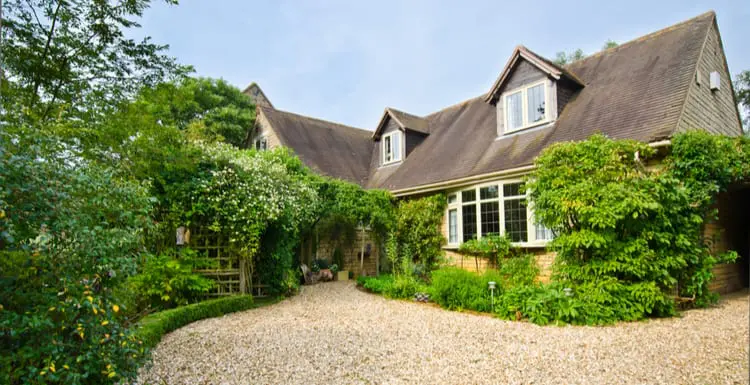When cost is an important factor, building a driveway with gravel instead of asphalt, cement, or pavers is the best option.
But while gravel is often used as a general term, there are many variations of it. You’ll see below that there are several types of gravel, and not all are suited for driveway use.
The best gravel options will hold firmly in place, provide a sturdy foundation for your vehicles, and resist washout.
The worst options won’t allow your vehicle to get traction, will wash out faster, encourage ruts, and can be dangerous.
Knowing the difference between these is the key to building a long-lasting, affordable gravel driveway. In this guide, you’ll learn how to choose the best type of gravel for your driveway. Let’s get started!
Driveway Gravel Types
With the ideal structure for a gravel driveway in mind, let’s look at the different types of driveway gravel and gravel alternatives you can choose from for the top layer.
These are measurements of the general diameter and size of the crushed stone or gravel. Any type of rock can be crushed into these sizes to give you the right choices for layering your gravel driveway.
Limestone
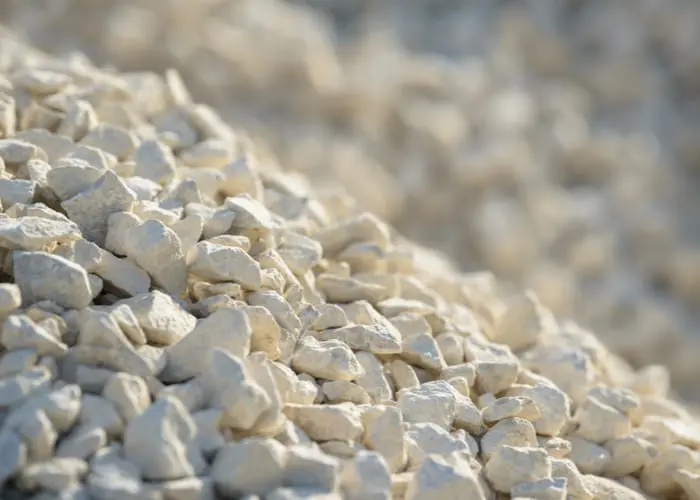
Cyrustr/Shutterstock
Limestone is the most common type of gravel or crushed stone you’ll find in the United States. It breaks cleanly and easily in rock crushing machines. It’s very widely available in all regions and is known for its strength.
Chances are, when you picture a gravel driveway, the gray rock you’re thinking of is limestone. Many times, dolomite is included in limestone mining units at quarries.
Dolomite, also called dolostone, dolomitic limestone, or even mistakenly labeled as limestone, is commonly combined with limestone for use in driveways in the U.S.
It is chemically very similar to limestone but is slightly harder than true limestone. The appearance is also similar, making it difficult to tell the difference between the two types.
Limestone is one of the most affordable and durable types of gravel you can use for a driveway. It usually costs between $35 and $54 per cubic yard. For large quantities, it can be cheaper.
Granite
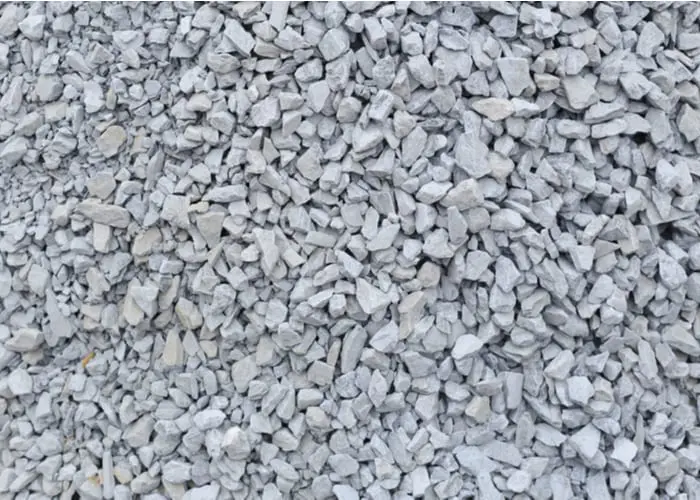
Bignai/Shutterstock
Crushed granite is not as commonly used for driveways as limestone, but it is a distant second runner-up. Crushed granite is unique in appearance, with different shades and veins of color running through the rocks.
For an attractive driveway that is as strong as it is beautiful, crushed granite fits the bill. Crushed granite is highly permeable, so water can drain and flow around it without disturbing the gravel too much.
It holds its color well even with intense sun exposure. It’s considered to be an affordable type of gravel (technically, crushed stone), so it’s worth considering for use in a driveway.
Crushed granite usually costs somewhere between $38 and $75 per cubic yard.
Shale
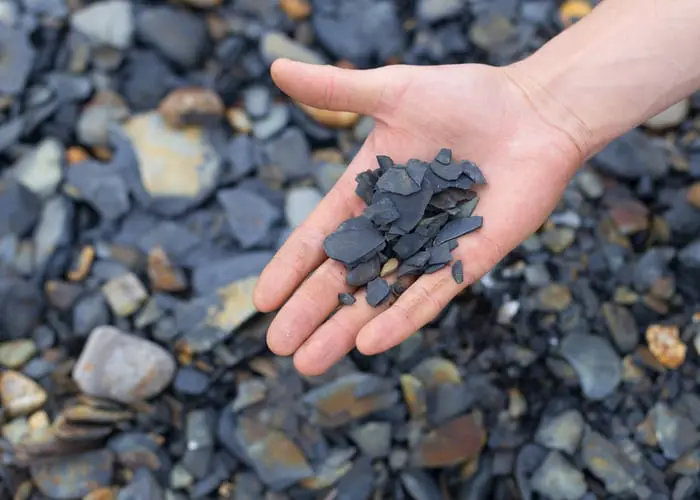
Juninatt/Shutterstock
Crushed shale is known as a good alternative to crushed limestone for driveways. The appearance is different from limestone, thanks to its bluish-gray color. It is soft and isn’t as strong as other types of crushed stone.
So repeated traffic from heavy vehicles will crush and compact it. The result is a driveway that looks closer to asphalt than a traditional gravel driveway. If you’re worried about dust being an issue, it’s less prone to creating dust than limestone.
Since it is lighter than limestone, it is less expensive to have delivered. Crushed shale usually costs somewhere between $28 and $85 per cubic yard, depending on the size of the rocks.
Marble Chips
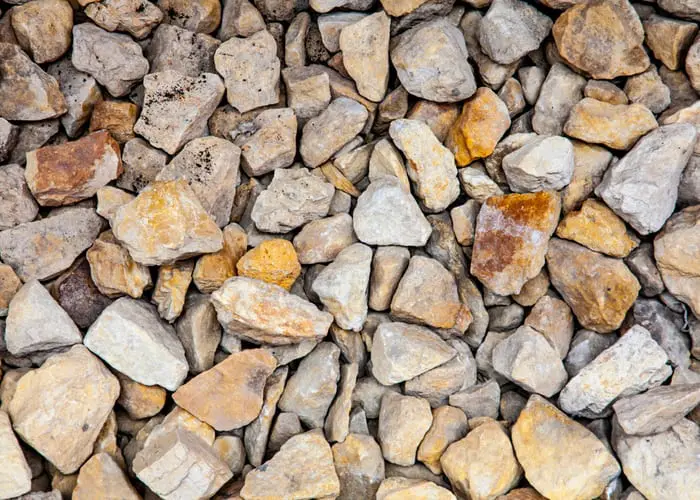
Corcobein/Shutterstock
Marble chips are not as commonly used for driveways, but they do lend an elegant touch. The chipped marble sparkles in sunlight and adds a posh look to any driveway.
It is prohibitively expensive for many and costs more than other types of gravel for driveways. But if you have a large budget and want your house to really stand out in the neighborhood, there’s hardly a better choice.
Marble stays cool even in direct heat. Be aware that there may be a glare when light hits it. Marble chips cost about $130 per cubic yard, and delivery costs more.
Recycled Asphalt
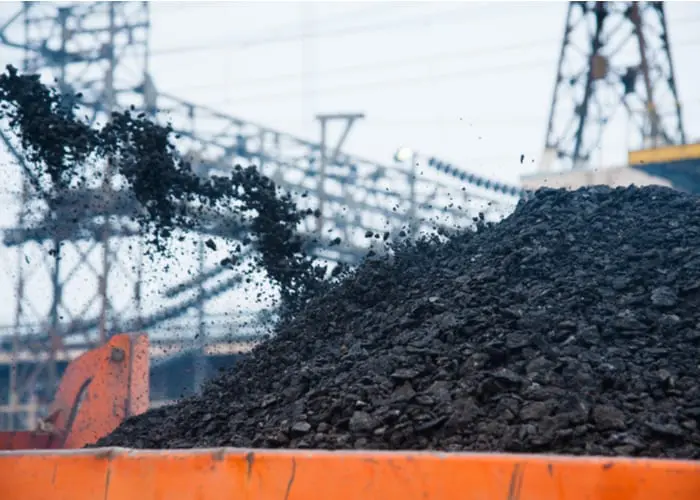
SGr/Shutterstock
Recycled asphalt is another option for a gravel driveway. Asphalt millings are crushed from existing roads and driveways and reused in their crushed state.
Since crushed asphalt still has tar in it, it is an excellent material if you want a solid, tamped-down driveway. It’s much more affordable than laying an asphalt driveway and requires fewer natural materials.
The look, when finished and tamped down, is very similar to a rough asphalt driveway. Recycled asphalt usually costs somewhere between $25 and $50 per cubic yard.
If you’re reusing asphalt from your current driveway, the cost may be lower.
Crushed Concrete
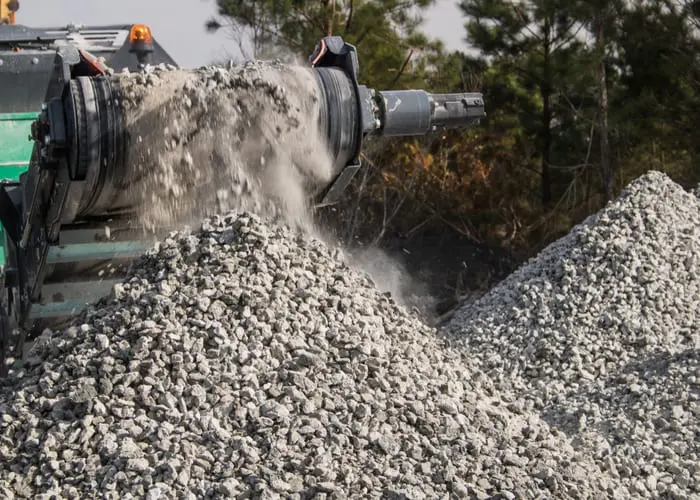
Coastal Girl/Shutterstock
Crushed concrete driveways are another option if you want a gravel driveway that is more affordable. Recycled or crushed concrete is collected from old concrete slabs and blocks that were torn down.
The concrete millings from a crusher are about 3/4 of an inch in size and more uniform than gravel. You also get the benefit of stone dust, which helps cement the driveway and prevents it from washing out.
Many people choose crushed concrete for a driveway because of its affordable price. Expect to pay somewhere between $16 and $75 per cubic yard, depending on the quantity you buy.
Seashells
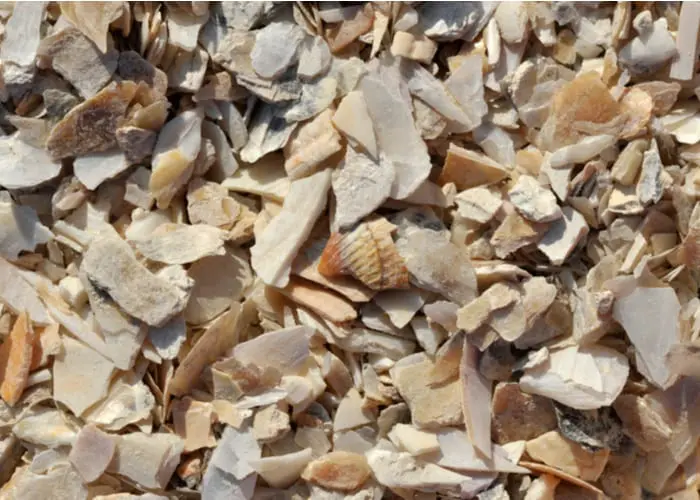
Graham Corney/Shutterstock
Crushed seashells may be used for “gravel” driveways in coastal regions. Oyster, scallop, and clam shells are the most commonly used types of shells. The shells will be broken down more and more as they are driven and walked over.
They act much like crushed stone in the way they shed and drain water. They also compact well to create a stable surface.
The types of shells used will determine the color. There’s usually a mix of whites and browns on crushed seashell driveways.
Crushed seashells usually cost about $40 per cubic yard, which is very affordable. But if you’re in a coastal area where the shells can be procured nearby, the cost can be as low as $14 per yard.
Types of Driveway Gravel to Avoid
Above, we’ve listed some of the most popular choices for types of gravel used in driveways. But not all gravel is created equally!
There are a couple of types you should avoid when making a driveway.
Pea Gravel
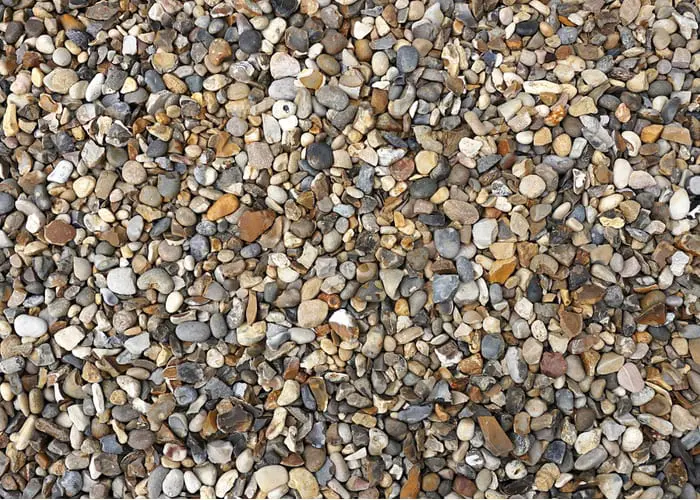
Lucid Formation/Shutterstock
Pea gravel is smoothed and rounded gravel that features a multitude of shapes and colors. It’s beautiful but impractical for a driveway.
One expert likened this type of gravel to ball bearings because they won’t allow your vehicle to get good traction as the wheels spin.
Since the individual pieces are rounded and smooth, they won’t lock together or tamp down over time. This makes for a very loose driveway that is prone to washout.
It’s also difficult to walk on if it is poured to the depth required for a driveway. Our advice: avoid pea gravel for driveways. The only upside pea gravel has is that it is a fairly inexpensive material to work with.
River Rock
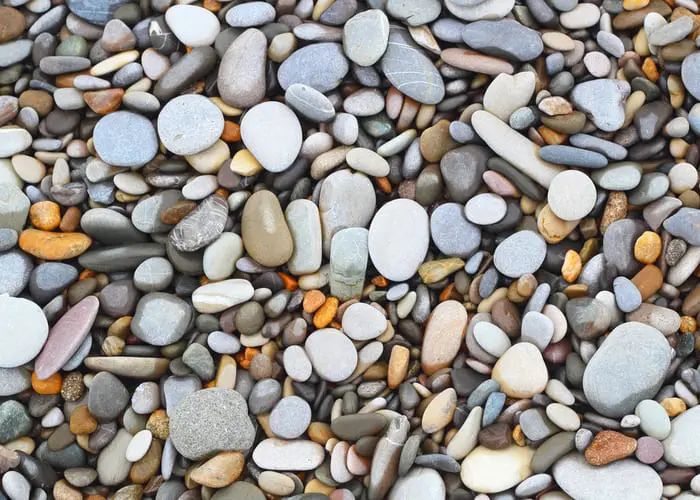
Strela Studio/Shutterstock
River rock, also called river run or river stone, is also smoothed and rounded like pea gravel. Water erosion over many years is how river rock acquires this smooth shape.
These are natural stones that are matched by size to provide loads of river rock that are somewhat uniform in size. Many people like the appearance of river rock, but it’s not a good choice for driveways.
Like pea gravel, river rock is just too smooth and rounded to make for a stable driveway. It’s particularly problematic if your driveway goes uphill. The stones will slide against each other and make it very difficult to gain traction.
Choosing the Best Driveway Gravel
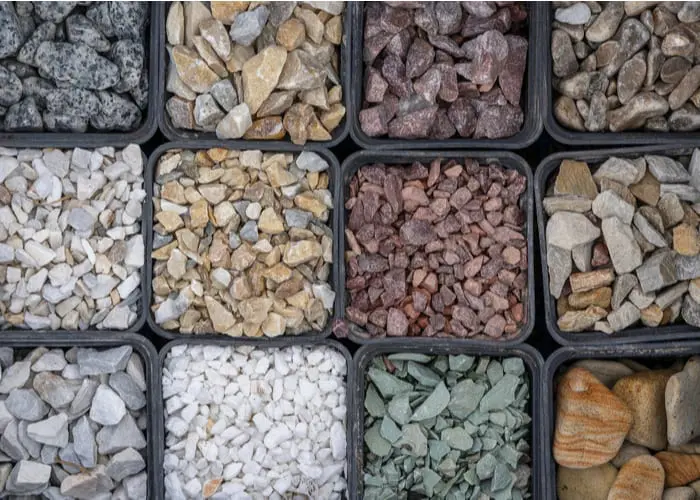
OlegD/Shutterstock
Choosing the best type of gravel for your driveway requires a little research. Knowing the right types of gravel to use will prevent you from making an expensive mistake.
Driveways built with the wrong types of gravel are much more prone to washout, where normal rain and water erosion push the gravel off the drive.
Unsuitable gravel types can also prevent vehicles and heavy machinery from getting good traction, which can be annoying at best and dangerous at worst.
We’ve compiled some excellent information from a range of experts and trusted sources in the aggregates (crushed stone and rock) industry. Choosing the best gravel for your driveway is a cinch with this guide!
Driveway Gravel Layers
Let’s talk about the layout and construction of a good gravel driveway. When you look at gravel drives, you only see the top layer. There are actually three layers in gravel driveways: the base, middle, and top.
Each one is essential to keep the stones anchored in place and provide a safe, stable foundation for your vehicles to drive on. Here’s what you should know about each layer of a good gravel driveway.
Base Layer
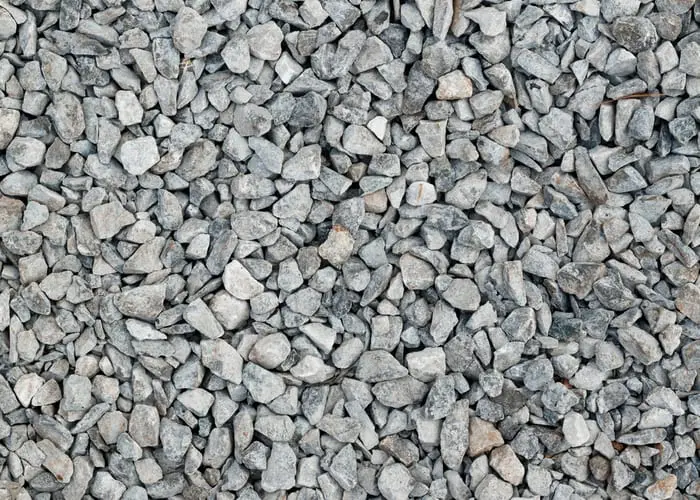
Panuwat Kanisarn/Shutterstock
- #1 crushed stone, 4” depth
The gravel in the base layer is installed first. In areas with clay soil, or if you’d like to give your new driveway a uniform base that won’t mix with the soil underneath, you can start with black geotextile or landscaping cloth.
But the most important part is the size of the gravel you use in the base layer. The base layer of a gravel driveway should be much larger than the gravel you’ll use for the middle and top layers.
Base gravel is typically #1 crushed stone, where pieces are angular and close to the size of baseballs. The base layer gives the middle and top layers a foundation they can somewhat settle down into rather than washing away.
It also helps facilitate drainage. This layer should be around 4 inches deep, which provides a firm foundation for the rest of the driveway. Think of this as the foundation on which everything else is built.
Middle Layer
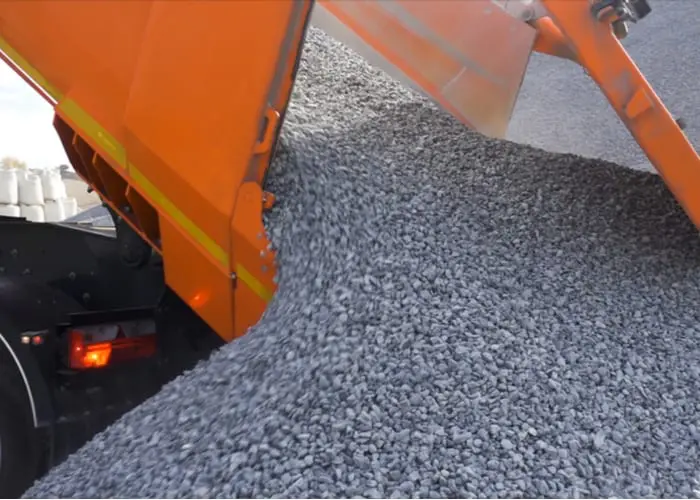
Media Whalestock/Shutterstock
- #4 crushed stone, 3-4” depth
The middle layer of a gravel driveway is composed of crushed stone smaller in diameter than the base layer. These rocks are close to the size of golf balls. They are angular in shape, which helps them “lock” together under weight.
Some of the #4 crushed stone will work its way down to securely sit between and on top of the base layer of gravel. This creates an even sturdier foundation for the driveway. It should be poured and raked to about a 3- to 4-inch depth.
Top Layer
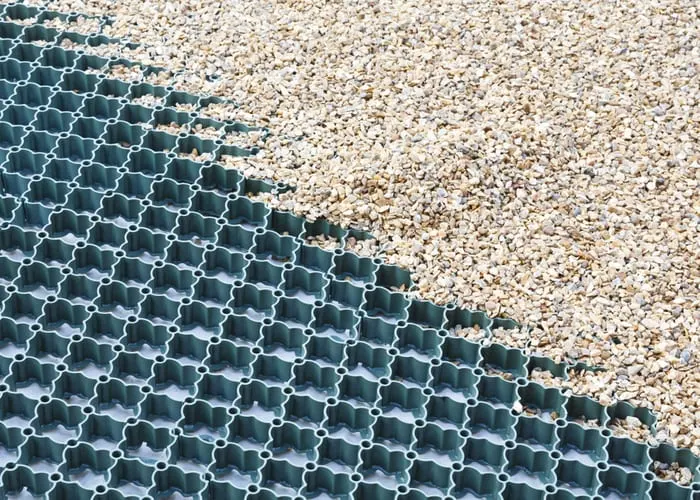
Paul Maguire/Shutterstock
- #57 or #411 crushed stone, 3-4” depth
The top layer of a gravel driveway is installed on top of the middle layer. The gravel used in this layer is typically #57 crushed stone or #411 crushed stone (#57 and rock dust).
This type of gravel is smaller in diameter than the middle and base layers. If you opt for #411 crushed stone, the mixture contains some rock dust in addition to the nickel and quarter-sized stones.
The rock dust acts like cement to keep the gravel in place. Crushed #57 stone is small enough to settle and lock into some of the spaces between the larger gravel in the lower layers.
But it’s large and angular enough to stay in place on top of the middle layer and create a somewhat uniform look for the driveway. The top layer should be 3–4 inches deep.
Bonus tip: Add a layer of weed prevention membrane, this will prevent weeds from growing through.
Deciding on the Right Driveway Gravel
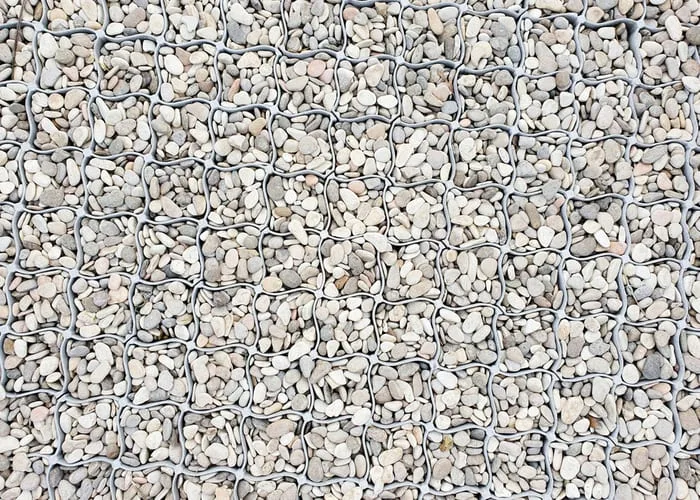
Vittoria_vittoria/Shutterstock
With the different types of gravel in mind (and which to avoid), you can narrow your options and find the right type for your driveway. In terms of cost, check out the different types and their price per cubic yard.
- Limestone: $35-$54/cu yd
- Granite: $38-$75/cu yd
- Shale: $28-$85/cu yd
- Marble chips: $130+/cu yd
- Recycled asphalt: $25-$50/cu yd
- Crushed concrete: $16-$75/cu yd
- Crushed seashells: $14-$40/cu yd
Marble chips are easily the most expensive type of gravel you can use for the top layer of your driveway. Crushed seashells are the cheapest. But limestone is the most common type of gravel used in driveways.
So keep that $35–$54 per cubic yard figure in mind as you work out your driveway budget. Aside from cost, choosing the right type of gravel or crushed stone means thinking about the materials’ appearance.
Limestone is the traditional gravel used in driveways, so you can’t go wrong there. Granite has a more colorful look, with interesting shades of gray, white, and red.
Shale has a bluish-gray coloring that tamps down to resemble asphalt over time. Marble chips sparkle and look luxe. Crushed concrete mimics the look of gravel but is cheaper.
And crushed seashells lend any home that coastal vibe, but they may not look at home in areas far from the coast. What type of driveway gravel seems to be the best fit for your budget, home, and landscape style?

